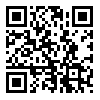BibTeX | RIS | EndNote | Medlars | ProCite | Reference Manager | RefWorks
Send citation to:
URL: http://jors-sj.com/article-1-62-en.html
2- Azad University of Ilam, karenfatahi@yahoo.com
The increase in urban population and congestion in public spaces have become important challenges of urban life. Invasion of privacy provokes diverse reactions in individuals that are influenced by different cultures. Architecture plays a vital role in creating a balance between social interactions and maintaining privacy. By appropriately designing urban spaces, one can help individuals feel comfortable and secure and strengthen social interactions. The aim of the present study was to analyze the emotions of individuals when faced with invasion of privacy and categorize these emotions based on the level of risk. The present research method is based on a qualitative and ethnographic approach that allows for a detailed examination of human behaviors and reactions. Data were collected through direct observation in the Tehran metro environment over seven consecutive days in the summer of 1403. A checklist was used to analyze the findings so that the results are presented accurately and systematically. The findings showed that the most common reactions to the violation of personal space included verbal reprimands or confrontations (19.35%) and leaning against the wall or subway car (12.9%). These findings indicate the impact of physical factors in the environment, especially deficiencies in the design of subway standards, in creating emotions related to privacy invasion. The results of this study indicate that physical factors in the environment play a fundamental role in creating emotions related to privacy invasion, and therefore, appropriate design of public environments can help reduce these tensions.
Received: 2025/04/17 | Accepted: 2025/10/15 | Published: 2025/11/3
| Rights and permissions | |
 |
This work is licensed under a Creative Commons Attribution-NonCommercial 4.0 International License. |





